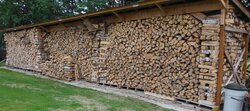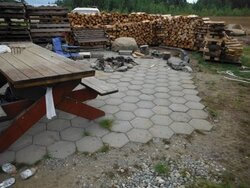I'm a Lodgepole Pine fan too. I like it because the beetle kill stuff is plentiful around here and very dry. As others have said, you don't need to season it, if you choose the right trees to cut. It splits pretty easy, no big branches, so no big knots. Also there is virtually no pitch, if you select trees that are dry.
On the other hand, Douglas fir, which is pretty plentiful around here as well, never seems to be as dry as the lodgepole pine, even if it's been dead standing for much longer. Douglas fir also has lots of big branches and can be a real pain to split by hand. But the thing I hate the worst about DF is the pitch! It seems to ooze pitch forever, even if it's a few years old and you bring some in the house and let it sit by the warm stove it will start oozing. It oozes and drips on the floor and the next thing you know you're walking around the house with some sticky stuff sticking to your socks and leaving sticky spots on the floor in every room. I stopped cutting the stuff because of that. Lodgepole pine seems to burn just as well as DF, but without the pitch.






 Try it, you'll like it.
Try it, you'll like it.
